We included HMH Into Math Grade 4 Answer Key PDF Module 17 Two-Dimensional Figures to make students experts in learning maths.
HMH Into Math Grade 4 Module 17 Answer Key Two-Dimensional Figures

Architect
Architects plan and design buildings, but they do not just build skyscrapers or museums. Most buildings you enter were designed by an architect. How much do you know about architects?
Did you know that the plans architects make for buildings are called blueprints? This is because the process once used for drawing and copying plans involved a blue compound.
Maya Lin is an artist and architect whose important work includes the Vietnam Veterans Memorial in Washington, DC, also known as The Wall. Lin was a 21-year-old college student when she won a nationwide competition to design the memorial.
STEM Task:
Architects often design large buildings and hotels with walking bridges between them. These bridges must be strong enough to hold many people. Work with a partner to build a bridge between two stacks of books using straws and tape. When completed, place a cup on the bridge. Put pennies or connecting cubes, one at a time, into the cup to see how many it can hold before collapsing. Think about how to make the bridge stronger.
Learning Mindset
Resilience Manages the Learning Process
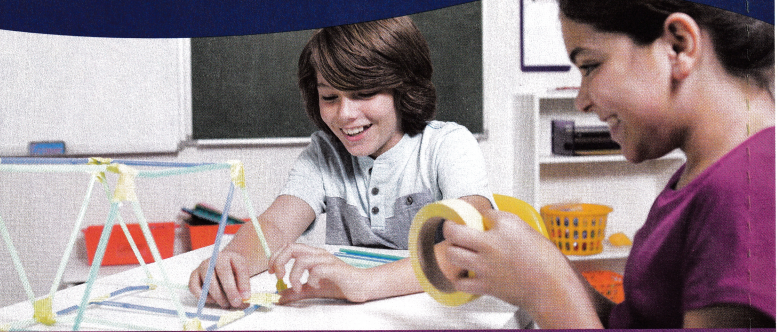
People have different preferred ways of working.
- Some like to work alone while others prefer working as a team.
- Some like to read directions and others like hearing them or seeing them demonstrated.
- Some like to draw a picture while others like to build a model.
Knowing your preferred learning style will help you when you are presented with new tasks and challenges. It is important to start to manage your own learning process. Part of developing the skill of resilience is not becoming too dependent on the help of others. How are you learning to resolve issues yourself?
Reflect
Question 1.
What strategy did you use to build the bridge? Why did you choose this strategy?
Answer:
Question 2.
What if you had another chance to do this task? How might research or a different strategy help?
Answer:
Which figure does not belong?
- Look at the four quadrilaterals.
- A point in the middle of each side is marked. Start at one point and draw a line to the next nearest point.
Continue connecting points until you have drawn another quadrilateral inside the first quadrilateral.

Compare the new quadrilaterals. What observations can you make?
Answer:
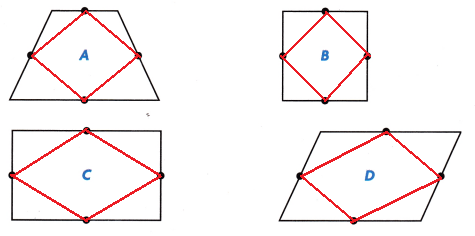
After comparing the new quadrilaterals, observation is that we get a quadrilateral again if we combine the midpoints of the sides of a quadrilateral.
Explanation:
(A) Trapezoid: If we combine midpoints of the sides of a trapezoid, then it will form a quadrilateral inside where adjacent sides of it are equal.
(B) Square: If we combine midpoints of the sides of a square, then it will form a square again where all sides of it are equal and all four sides form right angles at vertices.
(C) Rectangle: If we combine midpoints of the sides of a rectangle, then it will form a rhombus where opposite sides of it are equal and opposite angles are equal.
(D) Parallelogram: If we combine midpoints of the sides of a parallelogram, then it will again form a parallelogram where opposite sides of it are equal and parallel.
Turn and Talk
What types of quadrilaterals can you draw inside a circle so that all four vertices of the quadrilateral touch the circle?
Answer:
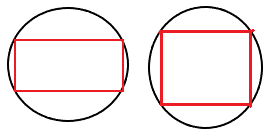
We can draw rectangle and square inside a circle. So that all four vertices of the quadrilateral touch the circle.
Are You Ready?
Complete these problems to review prior concepts and skills you will need for this module.
Sides and Vertices
Cross out the shapes that do not belong.
Question 1.
Shapes with 4 vertices.
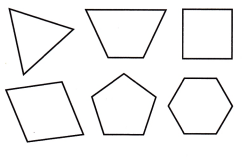
Answer:
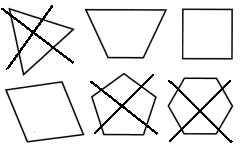
Explanation:
The crossed shapes in the above image has either less than four vertices or more than four vertices.
Question 2.
Shapes with 8 sides.

Answer:
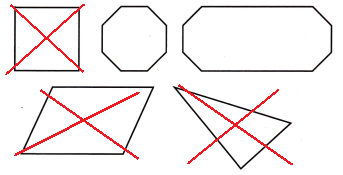
Explanation:
The crossed shapes in the above image has either less than eight vertices or more than eight vertices.
Number of Sides
Write the number of sides.
Question 3.

________ sides
Answer:
5 sides
Explanation:
A straight line joining two vertices is called a side of a polygon. In the above image as we can count, the number of sides are 5.
Question 4.

________ sides
Answer:
12 sides
Explanation:
A straight line joining two vertices is called a side of a polygon. In the above image as we can count, the number of sides are 12.
Question 5.

________ sides
Answer:
4 sides
Explanation:
A straight line joining two vertices is called a side of a polygon. In the above image as we can count, the number of sides are 4.
Classify Angles
Classify the angle. Write acute, right, or obtuse.
Question 6.

Answer:
In the above image we can observe the angle is 30 degrees. The angle which measures less than 90 degrees is called as acute angle. So, the above angle is acute angle.
Question 7.

Answer:
In the above image we can observe the angle is 90 degrees. The angle which measures exactly 90 degrees is called as right angle. So, the above angle is right angle.
Question 8.

Answer:
In the above image we can observe the angle is 135 degrees. The angle which measures greater than 90 degrees and less than 180 degrees is called as obtuse angle. So, the above angle is obtuse angle.